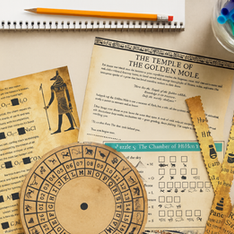What You Should be doing before Writing your Lesson Plan
- Androy Bruney

- Aug 3, 2021
- 3 min read
Updated: Aug 12, 2021

Create a Pre-instructional Plan to instantly upgrade your lesson Planning
There is a stage that all teachers go through, whether consciously or subconsciously where we plan what is going to happen in our lesson before we actually sit to write down our lesson plan.
In my blog post on lesson planning I emphasized the importance of allowing the lesson goal or lesson objectives to inform the instructional activities rather than the other way around. By doing this, we are able to design more cohesive and logical lessons that flow well together and enhance student learning.
Why Pre-Planning Works
I know what you’re thinking … teachers already have so much to deal with and spare time is a rare commodity for some of us. But hear me out...I believe that pre-planning makes lesson planning more effective and can save you time in the long haul.
Preplanning allows teachers to determine the cognitive target of the lesson. That way teachers are able to formulate the main learning goal for each lesson, which then informs the instructional strategies and activities that are employed for helping students meet that goal.
Allows teachers to gather ideas, and materials needed for each lesson before hand. This avoids the awkward situation that we have all experienced of not having enough material for our class. I can’t count how many times I planned a chemistry lesson around a specific laboratory activity only to realize, during the lesson that I didn't have enough of a specific reagent, or worse yet... expired.
Pre-planning ensures that teachers are able to sequence lesson surrounding a particular topic in a logical fashion to minimize student cognitive overload. Lessons should never be created in isolation.
When Pre-Planning a lesson teachers become more aware of (or are able to research) the common misconceptions surrounding a particular topic. That way lesson can be constructed such that these misconceptions can be addressed.
How to Pre Plan Effectively
Here is what you should be doing/considering when formulating your pre-instructional Plan.
1. Use your subject syllabus to list ALL the main objectives for the topic.
Your main objectives from your subject syllabus will serve as your lesson goal. There should be only one lesson goal per class. This outlines your lesson's purpose and serves to keep your content focused.
2. Sequencing
Arrange all your lesson goals from step one based on your student's needs as well as their prior knowledge on the topic being discussed. This should be arranged such that one lesson flows into the other. You can achieve this by creating a mind map around the topic and determine how all the goals/objectives are connected.
For example, in chemistry some may find it more useful to teach diffusion before introducing the particle model, but other teachers may choose to approach this sequence differently. Whatever you do should be in the best interest of your students.
3. Determine what students should already know
Having an idea of what students already know will enable you to plan instructional activities which extend on this prior knowledge .
4. List common misconceptions
This is an invaluable step that most teachers overlook. Students come to class with a variety of preconceptions which often times are incorrect. Having some idea of these can help you plan instruction and assessments to address them.
Diagnostic tools can be developed and used as bell ringers, you can conduct some research or even review students' past examinations to gather this information.
5. plan your lesson
These are some of the things you need to be doing before you begin writing up any lesson plan. I would advise doing this at the beginning of every new topic you are about to teach. If you are interested in giving pre-planning a try, you can download the free template by clicking the image below. Be sure to let us know how your pre-planning goes and if you you find it useful at all.













Comments